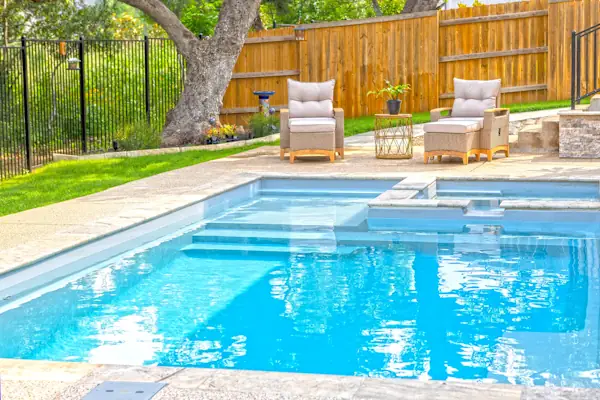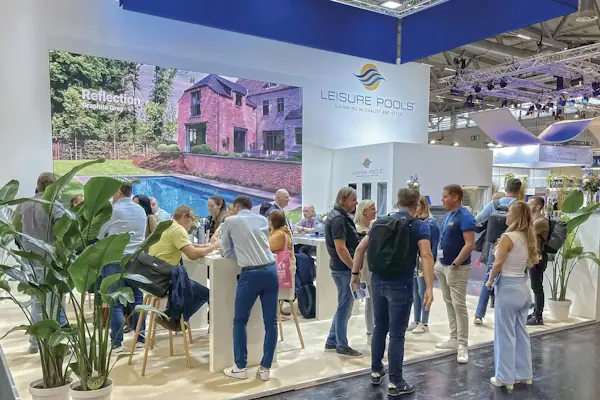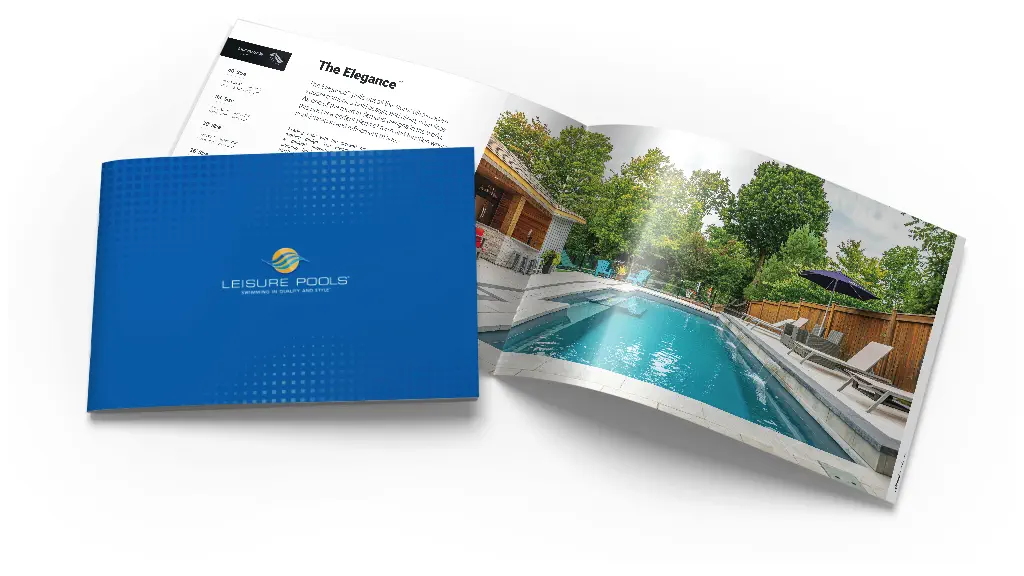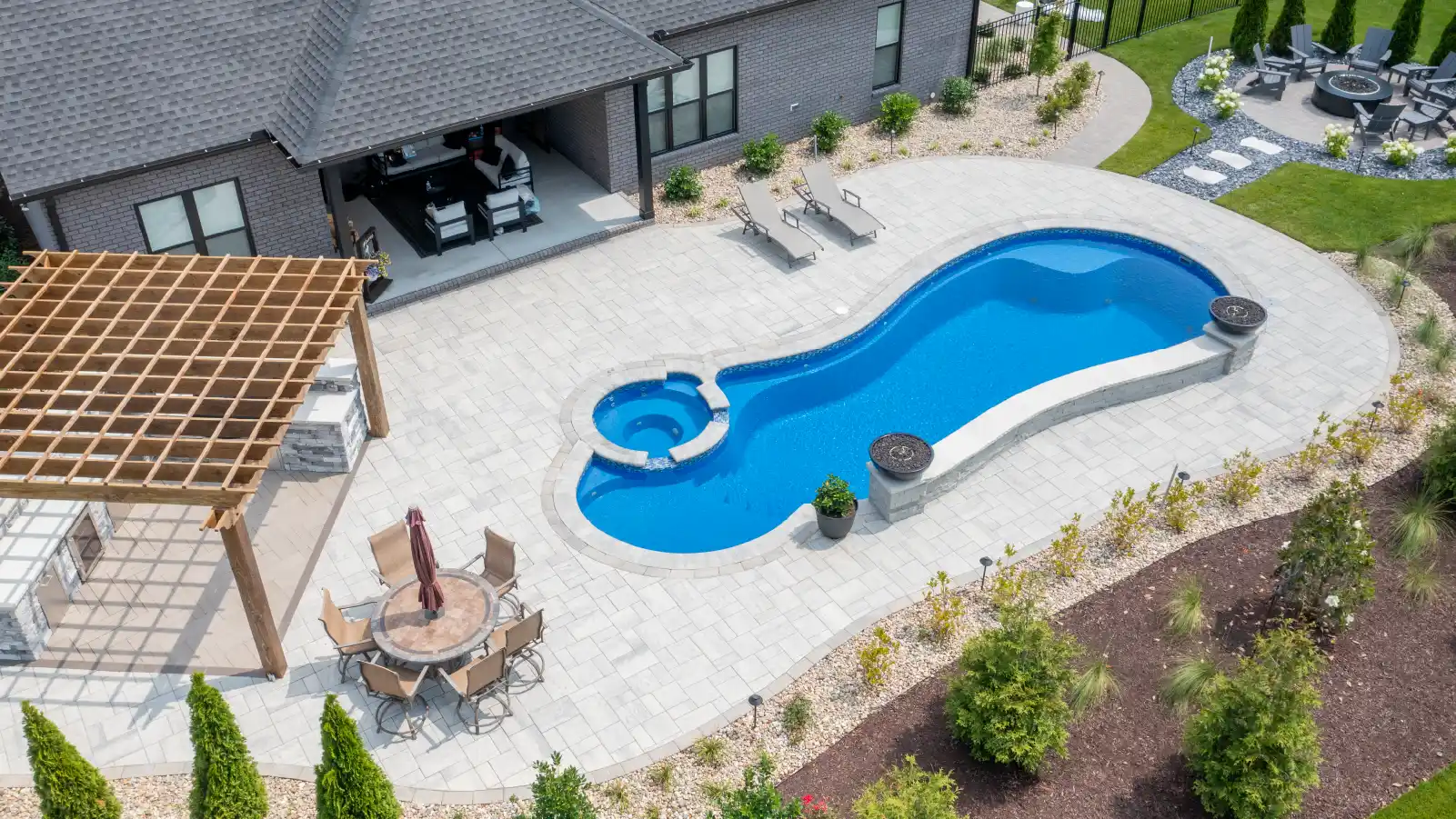
Definitive Guide to Saltwater Pools

Saltwater pools have revolutionized backyard swimming, offering a more luxurious and low-maintenance alternative to traditional chlorine pools. At Leisure Pools, we’ve seen firsthand how salt chlorination systems transform the swimming pool experience while reducing the time homeowners spend on pool maintenance.
- Superior Comfort & Quality: Saltwater pools produce silky-soft water that is gentler on the skin and eyes, matching the salinity of human tears and virtually eliminating harsh chlorine odors.
- Maintenance and Cost Savings: Salt chlorination systems automatically produce chlorine, drastically reducing the time spent adding chemicals and leading to significantly lower long-term operating costs.
- Ideal Pool Material: Fiberglass pools are the perfect foundation for saltwater systems. Their non-porous surfaces are impervious to salt corrosion, resisting algae growth and preventing the issues common in concrete and vinyl liner pools.
What Are Saltwater Pools and How Do They Work?
Saltwater pool systems use salt chlorine generators (also called salt chlorinators) to automatically produce chlorine from dissolved salt through a process called electrolysis. This innovative system creates a continuous cycle where salt is converted to chlorine, sanitizes your pool water and then converts back to salt.
The Salt Chlorination Process
The salt chlorinator consists of two main components:
Salt Cell (Electrolytic Converter): Installed on your pool’s return line after the pump, filter and heater, this device uses a safe electrical charge to convert dissolved salt into fresh chlorine.
Control Box: This unit regulates when and how long the salt cell produces chlorine, automating the entire sanitization process.
As pool water flows through the salt cell, the electrical charge transforms dissolved salt into chlorine. The chlorinated water disperses throughout your pool via return jets, killing bacteria and preventing algae growth. Once the chlorine completes its sanitizing work, it converts back to salt, creating an endless cycle.
Saltwater Pool Benefits: Why Make the Switch?
Superior Water Quality
Saltwater pools deliver silky-soft water that’s gentler on skin and eyes. The salt concentration matches that of human tears (approximately 3,000 PPM), eliminating the harsh chemical feel of traditional chlorine pools.
Reduced Maintenance
Once properly balanced, salt chlorinators dramatically reduce hands-on pool maintenance. You’ll spend less time adding chemicals and more time enjoying your pool.
Cost-Effective Operation
While the initial investment in a salt chlorination system may be higher, ongoing costs are significantly lower since you’re not constantly purchasing liquid or tablet chlorine.
Health and Comfort Advantages
- No red, irritated eyes
- No bleached swimwear or towels
- Reduced skin irritation
- Elimination of strong chlorine odors

Why Fiberglass Pools Are Ideal for Saltwater Systems
Not all pool types of handle salt chlorination equally well. Here’s how different pool materials compare:
Concrete Pools and Salt Water
Salt chlorinators can be up to five times more corrosive to concrete surfaces than traditional chlorine. This increased abrasiveness leads to more frequent resurfacing needs, making concrete pools costly to maintain with salt systems.
Vinyl Liner Pools and Corrosion Issues
While vinyl liner pool owners often use salt chlorination, the metal wall components are susceptible to rust and corrosion, creating potential long-term structural concerns.
Fiberglass Pools: The Perfect Partnership
Fiberglass pools offer the ideal foundation for saltwater systems. Drawing from decades of marine industry experience, fiberglass composite materials are specifically engineered for saltwater environments. The non-porous surface resists salt corrosion while providing:
- Complete imperviousness to salt damage
- Smooth surfaces that resist algae growth
- Reduced chemical absorption
- Long-term durability in saltwater conditions
Leisure Pools and other premium fiberglass pool designs showcase how perfectly salt chlorination systems integrate with modern composite pool construction.
Saltwater Pool Chemistry: Maintaining Perfect Balance
Essential Salt Levels
Proper salt concentration ranges from 2,700 to 3,400 PPM (parts per million). This translates to roughly one teaspoon of salt per gallon of pool water. Use test strips for accurate readings, as electronic salt chlorinators don’t always provide precise measurements.
Understanding Chlorine Types
Free Chlorine: The active sanitizer that kills bacteria and oxidizes contaminants. Maintain levels between 1-3 PPM.
Combined Chlorine: Forms when free chlorine reacts with pool contaminants, causing eye irritation and chlorine odor. Regular shock treatments eliminate combined chlorine.
pH Management: Maintain pH levels between 7.0-7.8 for optimal comfort and chlorine effectiveness. Since human eyes have a pH of 7.2-7.4, keeping pool pH in this range minimizes eye irritation. Additionally, keep the cyanuric acid levels below 30 PPM to ensure optimal chlorine effectiveness and water balance.
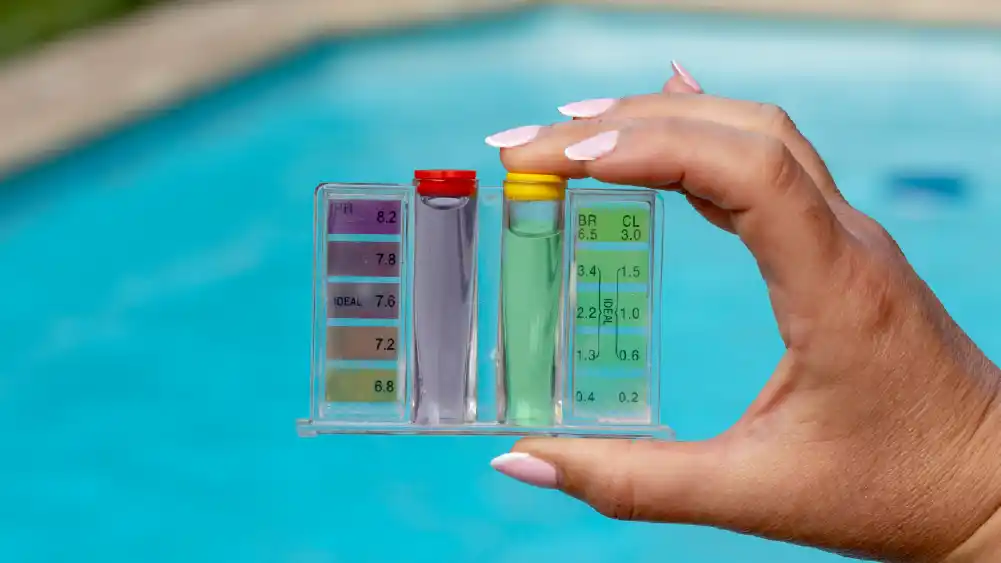
Common Saltwater Pool Myths Debunked
Myth: You Must Drain Your Pool to Convert
Reality: Simply test your current water chemistry and add the appropriate amount of salt. No draining required.
Myth: Saltwater Pools Taste Like the Ocean
Reality: Properly maintained salt pools have 1/10th the salt concentration of ocean water, with little to no detectable taste.
Myth: Salt Evaporates and Needs Constant Replenishment
Reality: Salt doesn’t evaporate. You only need to add salt when water is lost through backwashing, splashing, or overflow.
Myth: No Water Balancing Required
Reality: pH, total alkalinity, and calcium hardness still require regular monitoring and adjustment.
Salt Cell Maintenance and Care for Saltwater Pools
While salt chlorinators require minimal maintenance compared to traditional systems, some care is essential:
Regular Inspection
Check your salt cell monthly for scale buildup on the plates. Scale formation reduces efficiency and shortens cell lifespan.
Scale Prevention
Maintain proper water chemistry to prevent calcium scale formation. If scale appears, clean according to manufacturer instructions.
Salt Requirements
Use only pure sodium chloride (99%+ purity). Acceptable options include:
- Food-grade salt
- Water softener salt pellets
- Coarse solar salt
Avoid rock salt, iodized salt, or products with anti-caking additives.
Choosing the Right Salt Chlorination System
When selecting a salt chlorinator, consider:
- Pool size and bather load
- Climate and usage patterns
- Automation preferences
- Budget and long-term costs
Leading manufacturers like Hayward Pool Products offer comprehensive salt chlorination systems designed to integrate seamlessly with fiberglass pool plumbing.
Installation Considerations
Salt chlorinators must be installed on the return line behind your pump, filter and heater. Professional installation ensures optimal performance and warranty compliance.
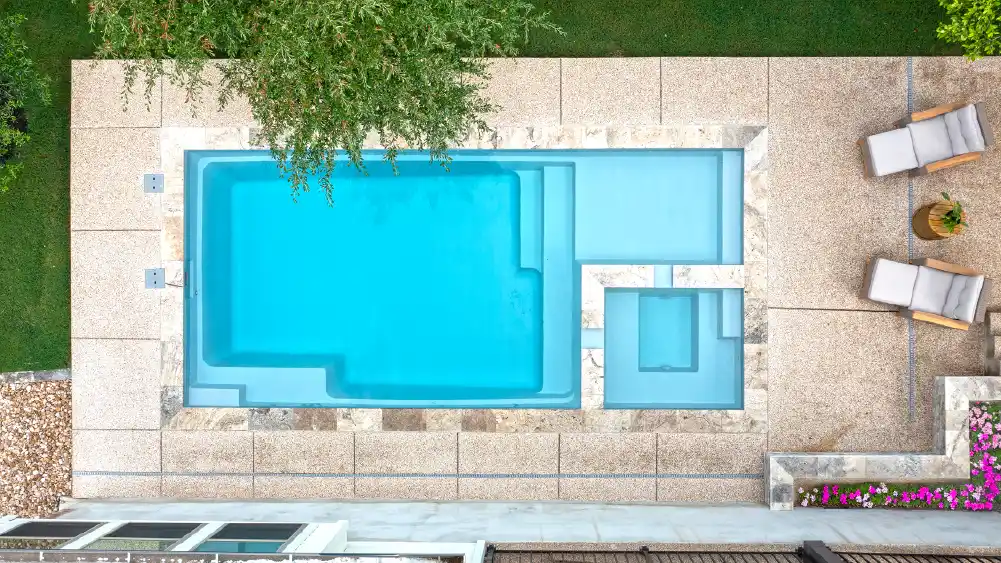
Is a Saltwater Pool Right for You?
Saltwater pools offer compelling advantages for homeowners seeking:
- Reduced maintenance time
- Superior water comfort
- Long-term cost savings
- Enhanced swimming experience
Combined with the durability and low maintenance of fiberglass pool construction, salt chlorination creates the ultimate backyard swimming solution.
Get Started with Your Saltwater Pool
Ready to experience the luxury of saltwater swimming? Leisure Pools’ fiberglass pools provide the perfect foundation for salt chlorination systems. Your Leisure Pools dealer can help you select the ideal pool design and salt chlorination system for your backyard oasis.
Frequently Asked Questions About Saltwater Pools
Share This Story, Choose Your Platform!
In This Article:
- What Are Saltwater Pools and How Do They Work?
- The Salt Chlorination Process
- Saltwater Pool Benefits: Why Make the Switch?
- Why Fiberglass Pools Are Ideal for Saltwater Systems
- Saltwater Pool Chemistry: Maintaining Perfect Balance
- Understanding Chlorine Types
- Common Saltwater Pool Myths Debunked
- Salt Cell Maintenance and Care for Saltwater Pools
- Choosing the Right Salt Chlorination System
- Is a Saltwater Pool Right for You?
- Get Started with Your Saltwater Pool
- Frequently Asked Questions About Saltwater Pools
- Written by Clint McClain.
- Locate a dealer and start your pool project today.



